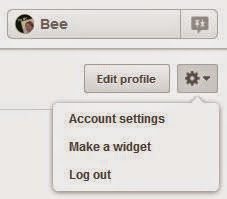Google is a search engine. It is not the only search engine, Bing (from Microsoft) is its main competitor, but Google is used by more than 90 per cent of the western world to search for information on the internet.
A search engine is not the same as a browser. The most popular browsers are: Internet Explorer (from Microsoft), Safari (from Apple, mostly used on Apple computers and devices), Chrome (from Google) and Firefox (from Mozilla). Your browser is your "window" to the internet; it enables you to view websites, including social media, and to use search engines.
A search engine provides a way of finding information that is stored somewhere on the internet.
The images above show a browser (the tabs, boxes and quick links across the top) displaying Google search results in the first image and a Twitter page in the second image. Twitter, Facebook, Amazon and other websites may all be listed in Google's search results and can be reached by clicking the links or by putting the appropriate link/website address directly into the box at the top of the browser.
Why website owners need SEO
There are millions of websites on the internet. Anyone who knows your website address (also known as domain name or URL*) can type it into a browser and see your website. Other visitors will need to have your website brought to their attention. This could be via another website or social media but the largest audience can be reached by ranking well in Google search results.Google uses a variety of data to determine who should be on page 1 of their results, including:
- close match of the search term (keyword or phrase) with your website content and how much importance the term has in relation to other content on your website;
- how many links go to your website from other sites using similar terminology;
- how many visitors land on your pages and how long they stay on your site;
- uniqueness of quality content (if most of the phrases are already found elsewhere on the web, don't duplicate);
- site history and frequency of content updates;
- speed of website, quality of code and 'meta-data' (two of the important meta-data are page title and description, read on...)
Ask yourself: Of the millions of websites in the world, why should yours be on page 1 of Google results? When you know the reasons, you will be on your way there!
Start-up? Use this Guide
Step 1. Find a competent website builder who will advise you of the things you need to consider. It would be useful if he/she understands the importance of SEO and will cater for this in some way (you would be surprised how many don't).
Step 2. We suggest using WordPress to build an easy to maintain website. If your designer says otherwise, make sure that you understand and believe his/her reasons.
Note. If you require an e-commerce package for an on-line shop, be aware that these can be very complicated and time consuming for a small business with a lack of appropriate skills. Take time to learn the correct set up for uploading and maintaining products and be aware of the SEO implications.
Step 3. Choose a website design that reflects your company image.
Step 4. Ensure that you understand the importance of SEO and do not neglect it.
Best of luck! Let us know if you'd like our help. Now, If you're ready for something a bit more technical, here is a previous article we posted on optimisation and images.
*acronym for Uniform Resource Locator












